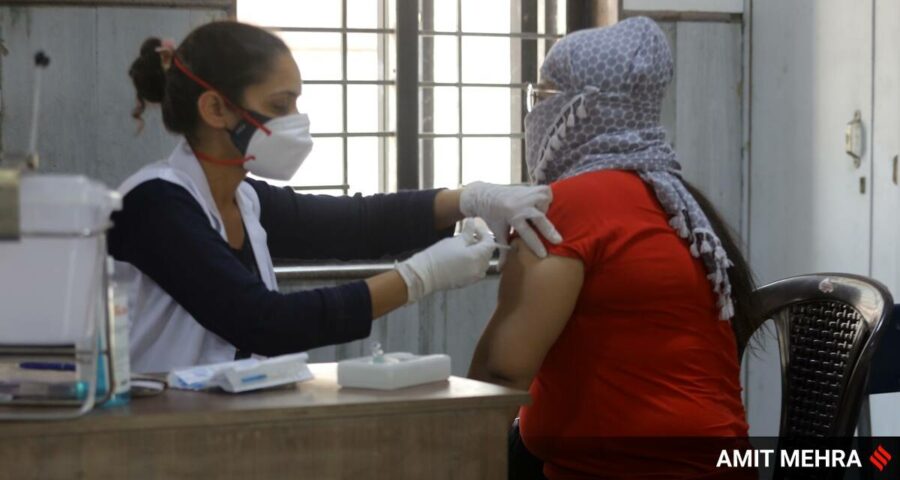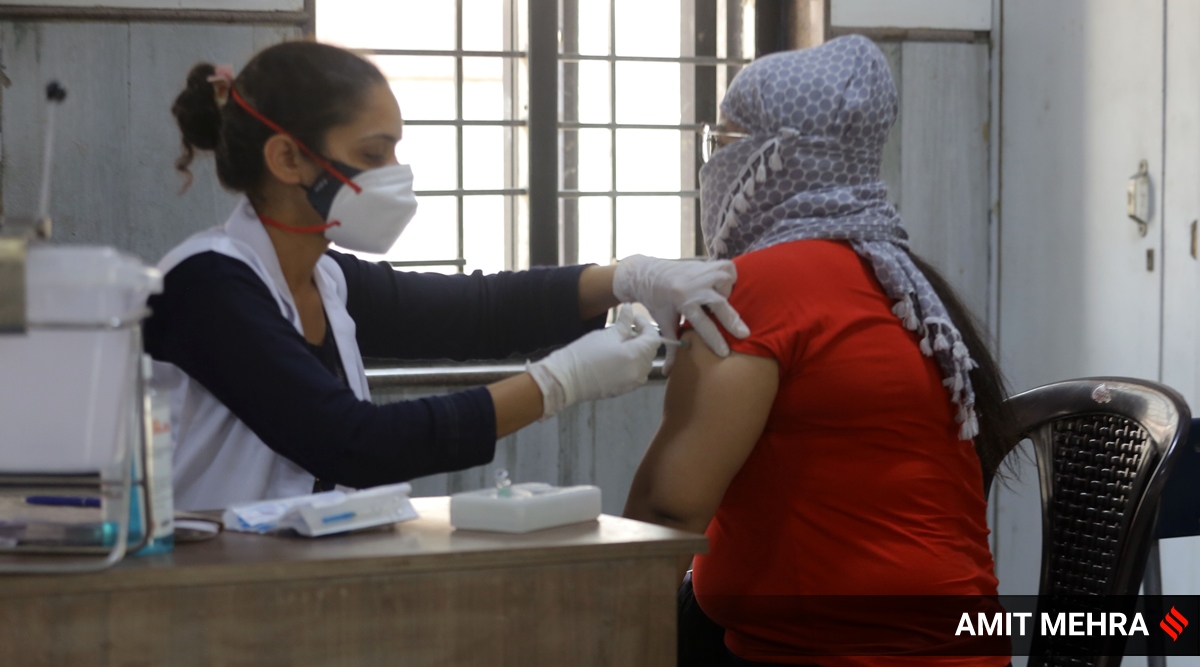On Thursday, 1.14 lakh people were given one shot of the vaccine in the city, according to the government's health bulletin.
Delhi Chief Minister Arvind Kejriwal said Saturday that Delhi has enough vaccines to last only another 5-6 days. Appealing to the Centre to give the city “adequate number” of vaccines, Kejriwal said Delhi needs at least 2.6 crore more doses to vaccinate the entire population of the city.
“Many people from NCR towns, such as Gurgaon, Noida, Faridabad and Sonepat are coming to Delhi to get vaccinated. They appreciate the facilities provided. The biggest hurdle so far in vaccination is shortage of doses. If we get enough, as I have said repeatedly, we can vaccinate everyone in Delhi in the next three months,” the CM said.
On Thursday, 1.14 lakh people were given one shot of the vaccine in the city, according to the government’s health bulletin.
Explaining Delhi’s demand and timeline, Kejriwal said that out of an estimated population of 2 crore, 1 crore in Delhi fall in the 18-45 age bracket, while those over 45 and those under 18 comprise 50 lakh each.
“This means we need 3 crore vaccine doses for 1.5 crore eligible people (all adults). So far, we have got 40 lakh doses and need 2.6 crore more. If spread out over three months, this means 85 lakh doses per month. If we can get this stock, all Delhiites will be vaccinated within 3 months. To meet this target, we will have to vaccinate 3 lakh people per day. We are doing around 1 lakh per day at present at around 100 schools. We can scale this up to 300 schools easily, provided we get vaccines on time,” he said.
There are 728 Delhi government school buildings in the city. Vaccination is free at these centres, as it is in government hospitals.
As per the new vaccine procurement policy of the Centre that is already in force, states, private hospitals and industries that can administer the vaccine, have been allowed to buy directly from the manufacturers.
Before the drive was opened to those in the age bracket of 18 to 44, the Centre procured the entire quantity of vaccines from manufacturers — Serum Institute of India (Covishield) and Bharat Biotech (Covaxin) — and distributed it to states. The states distributed the stock to government vaccination centres, which administered the vaccine free of cost, and to private hospitals that charged recipients Rs 250 per dose.
From May 1, the supply was divided into — 50 per cent for the Centre, and 50 per cent for the open market. The doses procured by states and private hospitals in the open market will be used to vaccinate those between the ages of 18 and 44.
As per policy, free vaccination is available at all vaccination centres that receive doses from the Centre, and these will be used to vaccinate healthcare workers, frontline workers, and those above the age of 45.
Kejriwal had said earlier that he had given the financial approval to officials to purchase 1.34 vaccine shots.
Several Delhi government ministers and MLAs, including the CM and Deputy CM Manish Sisodia, have been visiting vaccination centres over the past few days.
On Saturday, Kejriwal said that the actual need for vaccines in Delhi might be higher as people from NCR towns were also getting vaccinated in Delhi.
“People from the NCR region are also coming to Delhi to get vaccinated so we might need more vaccines than 2.6 crore, but at least this much we will need. I request the Centre to give us adequate numbers,” he said.
Expressing concern about the third Covid wave, Kejriwal said vaccination alone can safeguard people.
“The Principal Scientific Advisor has said that the third wave is inevitable. Seeing how dangerous the second wave was, people are worried about this. Vaccination alone can safeguard us. The Centre has helped us so far and am sure they will continue to do so,” he said.
At present vaccines are approved for use only for adults.
Kejriwal said he hopes that experts and the Centre are preparing a plan for those under the age of 18 as well.
Source: Read Full Article


